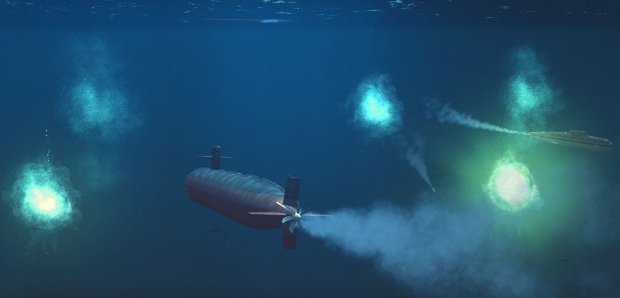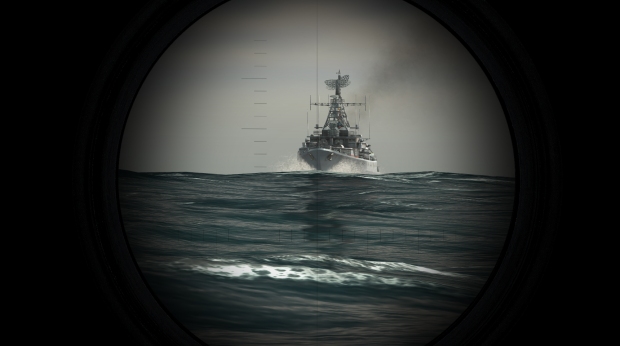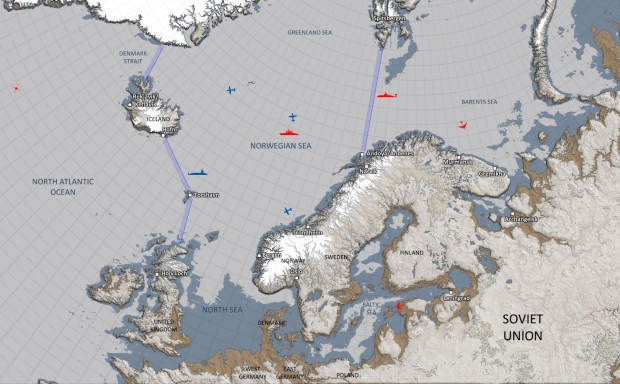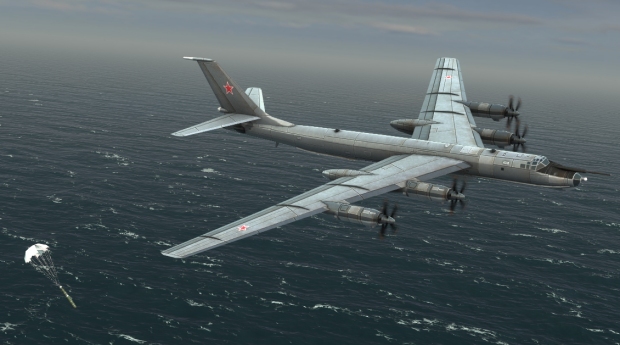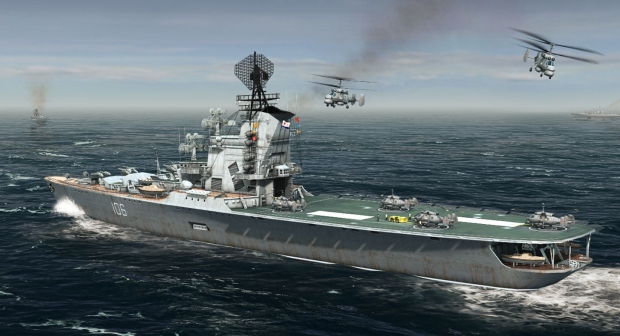The Flare Path: Laminar Floes
Simulation and wargame news
There's a saying in my village:
“When sloes and cobnuts early fall,
And goatsuckers in daylight are heard to call,
You'll be playing a spiritual sequel to MicroProse's Red Storm Rising and a new instalment of X-Plane in no time at all.”
The local sayings related to wargame pricing and acceptable frame-rates in heli sims scan better but are less relevant to today's column so I'll save those for another day.
The Royal Air Force Museum at Cosford, Shropshire is well provisioned when it comes to groundbreaking flying machines. Compared to envelope pushers like the Kestrel and Fairey Delta 2, X-Plane 11, unveiled at the Museum during Saturday's Flight Sim 2016 show, inevitably looked somewhat conservative.
During a dense hour-long presentation and a candid thirty minute Q&A session, Laminar Research's Austin Meyer and Ben Supnik emphasised XP11's interface and graphical improvements, and its new and upgraded flyables, while admitting that little had changed in areas like weather representation, ATC and approach to seasons.
If you don't have time to watch the entire elevator/aileron/rudder pitch, I recommend sticking your head round the door at +20 mins (Glimpses of some of the debuting and overhauled aircraft including a new 737 and a rebuilt Cessna) at 37.10 mins (Euro-flavoured autogen!) and at 42.20 mins (footage of dynamic ground support vehicles attending a jetliner).
The shift to “physically based rendering” (46.30 mins) is great news in theory as it should mean X-Plane 11 models light dissipation and reflections more persuasively than its predecessor. I'm not totally convinced by the glistening aircraft in the preview vid below - their shine is a little too sheath-like and facet-free – but the way distance now softens and veils vistas is very pleasing.
Briefly touched on at Cosford was the promising integration of the FMOD sound engine, minor improvements to X-Plane's underdeveloped combat dimension, and a sales initiative designed to ensure some late purchasers of X-Plane 10 don't end-up disgruntled. Assuming you buy the current version of Laminar's sim through www.x-plane.com rather than Steam in the next week or three, you can upgrade for free when the $60 XP11 arrives some time in November.
* * * * *
Atlantic Fleet is the only PC wargame I know that gives the Luftwaffe's Fw 200s their due (for a spell early in WW2 the long-range freighter-molesting Condors were almost as great a threat to British survival as the U-boats). As it also happens to be one of only two 2016 wargames The Flare Path has felt able to recommend without an extensive list of provisos you'll understand why I've high hopes for its Greenlit follow-up, Cold Waters.
Rather than simply shift the AF formula to a new theatre or era, Killerfish are narrowing their depth-of-field this time out. Where AF was all about hopping between simplified WW2 ships, subs and aircraft, the Cold War-couched Cold Waters will confine us to one claustrophobic conveyance – an SSN modelled in far greater detail than anything in the last game. The devs are keen to capture the tension of The Hunt For Red October and the tactical intricacy of MicroProse's Red Storm Rising. Intrigued, I scribbled some questions on a scrap of a paper, inserted the paper into an old Cutty Sark whisky bottle, and tossed that bottle into a patch of English Channel brine that looked like it might eventually end up in the vicinity of Adelaide, South Australia. The answers that follow washed up on Chesil Beach inside the same whisky bottle earlier this week.
RPS: For those who haven't played Red Storm Rising, what makes it a game worth imitating?
Killerfish co-founder, Paul Sincock: Red Storm Rising was from that golden era of Microprose simulations and designed by one of the industry greats, Sid Meier. What really appeals to us is the way it centred on your decisions as a commander, rather than the technical operation of various stations, getting caught up in the details of running the ship or managing the crew. It successfully immersed you in the tactical situation, threw life and death situations your way to deal with in a tense environment where you felt success or failure actually mattered, which it did. That seems to be the secret sauce missing in much of the current generation of war games, simulations and MOBAs.
RPS: For me, a big part of Atlantic Fleet's charm was its variety – the regular shifts between surface, sub-surface, and aerial activity. With just one player controlled unit in Cold Waters, isn't there a danger that CW will lack some of its predecessor's variety?
Paul: Going from 60+ ship classes to 4 submarine classes certainly decreases the variety of playable units but Cold Waters offers a much greater variety and depth of experiences. Short range knife fights with enemy submarines, steer wire guided torpedoes, avoid ASW patrols and mines to get your SEAL team ashore, stalk SSBNs, hide behind an iceberg, pop above the layer for a quick listen, intercept an amphibious landing force headed for Iceland before they can take out Keflavik airbase and the SOSUS barrier covering the Denmark Strait. These things just didn’t happen in Atlantic Fleet.
Atlantic Fleet is something like a miniatures board game involving lots of units with their various capabilities. Cold Waters is a subsim.
RPS: What type of sub will we be simming?
Paul: At release the SSN classes Skipjack, Permit, Sturgeon and Los Angeles are on track to be playable.
RPS: “Realistic sonar model” implies that you're simulating stuff like thermal layers and bottom bounce. Is that the case?
Paul: A lot of research has gone into the sonar model and although much of it occurs in the background, there is no waterfall display and so forth, the tactics associated with underwater acoustics and sonar detection are indeed valid.
For those wanting details, the sonar model simulates: thermal layers, surface ducts, shadow zones, convergence zones, propagation and transmission loss, ambient noise (based on sea state, rain, shallows and ice), bottom bounce, active sonar target aspect, flow noise, baffles, target masking, cavitation and transients. In addition, we model the various active, passive, towed array, dipping and sonobuoy equipment of the era with differing levels of sensitivity and thus detection ranges.
RPS: Am I right in thinking that CW won't model individual stations aboard the sub, or offer first-person interior or conning tower views?
Paul: That is correct. In combat, Cold Waters will have the ubiquitous periscope view along with a tactical map to complement what’s going on in the environment. Damage control and weapon load out screens are also available.
RPS: Will the abilities, health and morale of the crew influence the action in any way?
Paul: No. As with our previous games, we tend to treat ships and their crews as individual capable fighting units. It is assumed that the crew and officers on board are doing their jobs while you do yours.
RPS: A Cold War setting suggests that the spectre of thermonuclear war will be ever-present. Can CW's campaign end in global catastrophe?
Paul: In Red Storm Rising the war ultimately ended with diplomacy. In Cold Waters we’ve upped the ante and the situation can deteriorate into global thermonuclear war.
RPS: Killerfish's belief in dynamic campaigns is refreshing. Are the studios that claim that they're expensive and difficult to develop telling the truth?
Paul: They can be difficult and expensive, but designing a campaign within your resources and possessing a strong passion for the subject matter certainly help overcome these. It is far too easy to fall into the trap of an over ambitious and complex dynamic campaign. As long as it is balanced, immersive and provides compelling choices for the player, preferably with consequences, it should work.
One has to wonder if dynamic campaigns are just not a priority these days when multi-player and social gaming along with advertising and monetised Skinner box designs can generate far greater returns for far less development investment and risk.
RPS: Atlantic Fleet was remarkably affordable. Are you planning to offer CW at a similar price point?
Paul: No unfortunately. Despite an additional 6 months of work to bring Atlantic Fleet to PC, we decided to keep the price point where it had been for the mobile marketplace. Many mobile ports get accused of being quick money grabs or of gouging the PC market and we didn’t want to be among them.
The upside was this was received very well and built a great community of fans, who have come out in droves to support Cold Water’s Steam Greenlight campaign. The downside was that Atlantic Fleet for PC was underpriced, impeding our ability to continue financing its expansion and development.
Cold Waters will be a full PC game with a dynamic campaign and mod support. We’ll have to price it accordingly.
RPS: Did Atlantic Fleet sell as well as you had hoped on PC and did the feedback influence the Cold Waters design in any way?
Paul: Atlantic Fleet actually exceeded our expectations, especially given its mobile heritage and the stigma associated with mobile ports to PC and yes, feedback influenced Cold Waters greatly. First it validated our decision to move to PC as there was clearly a market for players wanting the type of naval games we do. Secondly, and as expected, we found PC gamers are more sophisticated and desire deeper detail and realism, hence the switch to a real time simulation. Finally the feedback highlighted the crucial need for mod support which has been central to Cold Waters development from the beginning.
RPS: Your 'About' page suggests that Killerfish is a two-man outfit. Is that the case?
Paul: There’s myself (programmer) and Nils Dücker (lead artist) full time. In addition we have another consulting artist Przemek Starkiewicz who focuses mostly on 2D art and special effects full time. After that we outsource music composition and other tasks that our core group might lack the time or expertise for.
RPS: Thank you for your time
* * * *
While none of the cars/sims competing in last week's comment-powered Flare Path Grand Prix managed to complete a full lap of the malodorous Tupwell Park, there were enough votes cast and thoughtful opinions shared (A big thank you to everyone that took part) for useful conclusion drawing.
Anyone interested in singleplayer race simming clearly needs to purchase Automobilista ASAP if they haven't already done so. When the vote stream dried up, the Brazilian dark horse was way ahead of its closest rival, the Italian prancing pony, Assetto Corsa.
That portion of the RPS readership that like their grids botless expressed a marked preference for iRacing. Automobilista and RaceRoom put in spirited performances on the MP side but lost touch with Kaemmer's blistering brainchild very early.
* * * *









